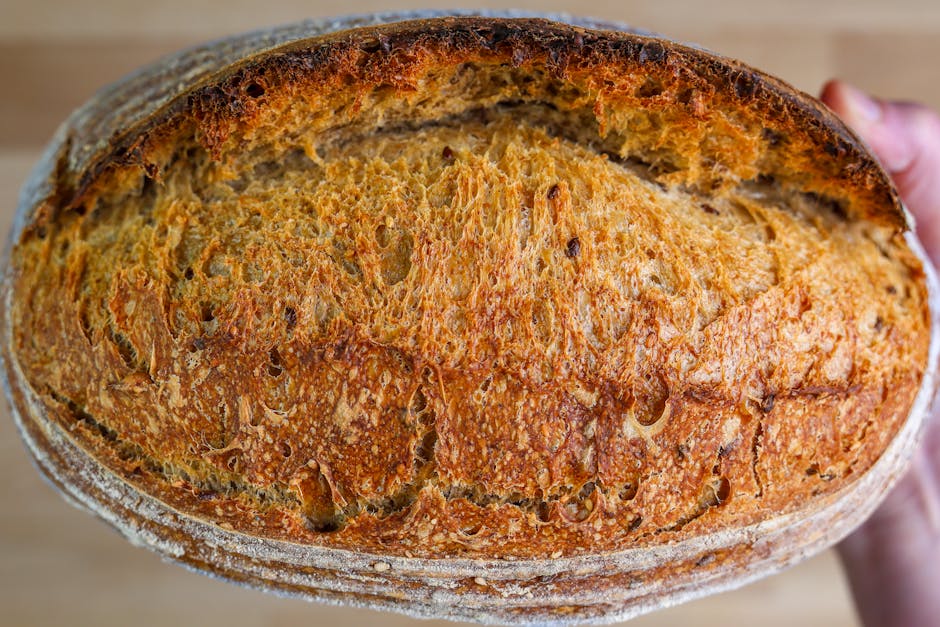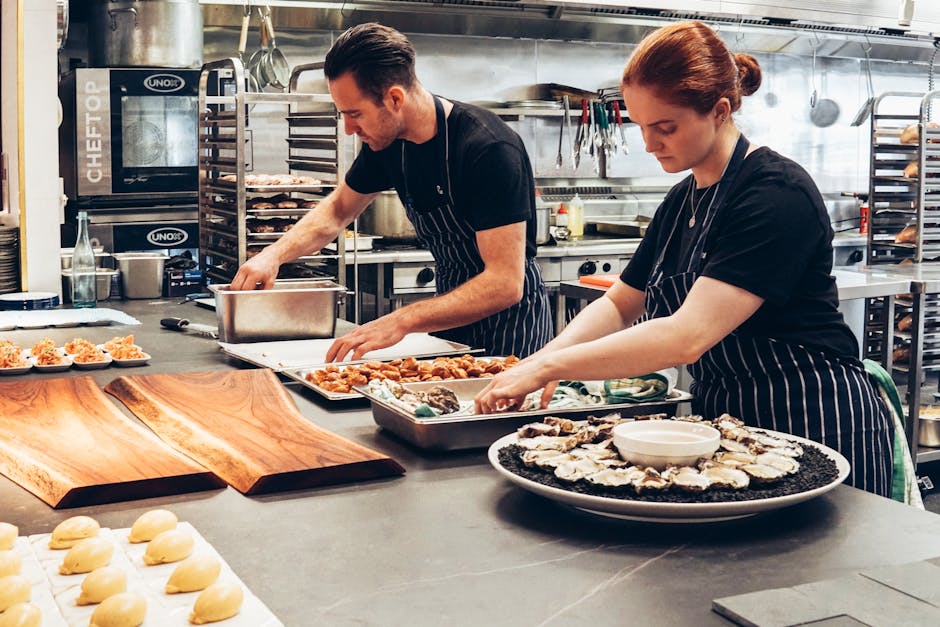What Fermentation Really Is
Fermentation is controlled microbial growth. It’s about letting specific microorganisms—like bacteria, yeasts, and molds—transform raw ingredients into something more complex. This process goes way back, to times when refrigeration didn’t exist. People needed a method to keep food longer, and fermentation showed up as both a preservation hack and a flavor bomb.
The key players are small but mighty. Bacteria like lactobacillus break sugars into lactic acid, which gives tang to yogurt and bite to kimchi. Yeasts—think Saccharomyces cerevisiae—convert sugars into alcohol and carbon dioxide, giving us beer, bread, and wine. Molds, though less glamorous, work behind the scenes in things like tempeh and blue cheese. Each microbe has a job to do, and under the right conditions, they get it done fast.
At the heart of it all is a simple chemical pattern: sugars get broken down. Depending on the microbes involved, the result can be acid, gas, or alcohol—sometimes all three. That’s where the flavor, fizz, or funk comes from. It’s not magic. It’s biology—just well-guided.
Why Fermentation Matters in the Kitchen
Fermentation has earned its place in the modern kitchen not just for tradition’s sake, but because it works—naturally and powerfully. At its core, fermentation preserves food without synthetic preservatives. That jar of pickles or homemade sauerkraut isn’t just staying edible longer; it’s being protected by acids and beneficial bacteria that develop during fermentation. Shelf life, extended. Chemicals, avoided.
But preservation is only part of the story. Fermentation also unlocks deeper, richer flavors you simply can’t get through other methods. Think sharper cheeses, funkier hot sauces, or the complex tang of a good sourdough. These aren’t one-note tastes. They’re layered, evolving, and often carry surprising depth.
Texturally, fermented foods bring crunch, creaminess, chew—sometimes all in the same bite. They also change the way food smells, often signaling boldness and character. Then there are the nutritional perks: Probiotics boost gut health, enzymes help with digestion, and bioavailability of nutrients often increases. In other words, it tastes good and does good.
Fermentation isn’t just a nod to the past. It’s a practical, flavor-forward, and health-respecting method that keeps food real.
Classic Foods Born from Fermentation
Fermentation has been shaping traditional and modern diets across the world for centuries. These time-honored foods don’t just taste great — they bring health benefits, cultural value, and culinary versatility.
Vegetables That Transform
Fermenting vegetables doesn’t just preserve them — it creates entirely new flavor profiles:
- Sauerkraut: Shredded cabbage fermented with salt. A staple in Central and Eastern European cuisine, known for its tangy crunch and probiotic punch.
- Kimchi: Korea’s famous fermented vegetable dish, typically made with napa cabbage, radish, garlic, and chili. Complex, spicy, and endlessly adaptable.
- Tempeh: A traditional Indonesian product made from fermented soybeans, known for its firm texture and nutty flavor.
- Miso: A Japanese seasoning made from fermented soybeans, often enriched with rice or barley. Used in soups, glazes, and marinades for a deep umami hit.
Dairy with a Microbial Twist
Fermentation can completely redefine dairy’s taste and texture:
- Yogurt: Milk fermented with specific bacterial cultures, resulting in a tart, creamy product rich in probiotics.
- Kefir: A thinner, drinkable cousin to yogurt, packed with more diverse cultures and a slight natural fizz.
- Sourdough Bread: Technically a fermented grain product, created by wild yeasts and bacteria that leaven the dough and give it its signature tang.
Fermented Beverages Around the World
Humans have relied on fermented drinks for celebration, nutrition, and preservation:
- Kombucha: Fermented tea with a satisfying tang and effervescence, made using a SCOBY (symbiotic culture of bacteria and yeast).
- Beer: Created by brewing grains and fermenting the sugars with yeast to produce alcohol and carbonation. Many styles, endless variations.
- Wine: Fermented grape juice, where naturally occurring or added yeasts transform sugars into alcohol, unlocking layers of flavor depending on grape, region, and aging process.
These classics prove that fermentation isn’t just scientific—it’s cultural, flavorful, and foundational to many of the foods and drinks we rely on today.
Techniques Every Cook Should Know
Fermentation splits into two main paths: wild and cultured. Wild fermentation leans on the native microbes already in your ingredients or environment—think sauerkraut or kimchi made without starter cultures. It’s unpredictable, raw, and a little wild in the best way. Cultured fermentation, on the other hand, uses specific starter bacteria or yeasts, like when making yogurt or sourdough. You get more control, speed, and consistency, but you trade a bit of chaos for structure.
The gear isn’t complicated, but it matters. You’ll need solid glass jars, fermentation weights to keep food submerged, and workspace cleanliness. Mold and contamination usually start with a dirty surface or sloppy storage. Keep it tight, keep it clean.
Several variables decide if your ferment thrives or fizzles. Temperature is huge—too cold and things stall, too warm and you risk over-acidifying or spoilage. Time affects both texture and flavor. pH needs to drop fast enough to create a safe, acidic environment. Salt isn’t just for taste—it controls microbial traffic, letting the good bugs win. Learn to tweak these elements, and you’ll stop making pickles. You’ll be crafting flavor biology.
Flavor Control and Recipe Integration
Fermentation brings big, bold flavors to the kitchen—but balance is key. Whether it’s the tang of fermented vegetables or the deep umami of aged condiments, the greatest culinary impact comes from knowing how to integrate these strong elements without overwhelming a dish.
Striking the Right Flavor Balance
Introducing fermented foods into a recipe isn’t just about adding acidity or funk—it’s about creating harmony.
- Start small: a spoonful of sauerkraut or a dash of fish sauce can go a long way
- Consider temperature: fermented ingredients can mellow in heat or shine in cold dishes
- Layer thoughtfully: contrast intense flavors with fresh or neutral elements
Smart Pairings to Try
Pairing fermented and fresh ingredients can elevate your cooking with contrast and depth. A few reliable combinations:
- Pickled onions + fatty meats – Cuts through richness with tang and crunch
- Miso + citrus dressings – Blends umami depth with brightness for bold salads
- Kimchi + eggs – Brings spice and funk to brunch classics
- Fermented chili paste + roasted vegetables – Adds heat and complexity
Tips for Modern, Flavor-Rich Plates
Use fermented foods as tools—not crutches—for building dynamic, layered recipes:
- Use fermented elements as a finishing accent (like a dollop of yogurt or drizzle of vinegar)
- Blend small amounts into sauces or marinades for depth of flavor
- Be mindful of salt levels—many fermented foods are naturally salty
- Combine textures: crisp lacto-fermented carrots with creamy purees, or crusty sourdough with soft cheeses
When used with intention, fermented ingredients not only enhance a dish—they define it.
Cultural Influence and Global Perspectives
Fermentation is far more than a kitchen technique—it carries centuries of culture, history, and innovation. Across the globe, different regions have harnessed fermentation not only to preserve food but to define their culinary identities.
How Fermentation Shaped Culinary Traditions
Each culture’s fermented foods emerged from necessity, climate, and local ingredients. Over time, they became cornerstone flavors that now carry deep cultural significance.
Korea
- Kimchi: Spicy, sour, and complex, kimchi is a national staple in countless varieties.
- Fermented pastes: Gochujang (chili paste) and doenjang (soybean paste) add umami-rich layers to Korean stews and marinades.
Japan
- Miso: This fermented soybean paste is the backbone of soups, marinades, and sauces.
- Soy sauce and mirin: Vital for seasoning and balance across Japanese cooking.
Germany
- Sauerkraut: Cabbage fermented with salt, often paired with meats or served as a tangy side.
- Fermented dairy: Products like quark and cultured buttermilk reinforce Germany’s fermentation heritage.
Ethiopia
- Injera: A spongy fermented flatbread made from teff flour, critical to communal meals.
- Fermented beverages: Tella (a traditional beer) and other grain-based drinks have long roots in Ethiopian culture.
Fermentation in Contemporary Cuisine
In recent years, chefs around the world have reimagined fermentation, applying it in:
- Fine Dining: Chefs use fermented elements to develop complex sauces, garnishes, and unexpected flavor contrasts.
- Street Food and Pop-Ups: Fermentation is driving innovation in accessible street-level cooking, from kombucha slushies to miso-infused burgers.
- Global Fusion: Techniques from one tradition are crossing into others—think kimchi tacos or sourdough injera.
Visuals Matter Too
Fermented foods can be visually bold—deep reds, cloudy textures, and bubbling brines. Great chefs know how to plate fermented elements in ways that enhance both form and function.
Explore the creative side of fermentation presentation: How to Create Artful Plating – Tips from the Pros
Getting Started: Fermentation at Home
If you’re just dipping your toes into fermentation, start simple. Sauerkraut is the classic beginner gateway—just cabbage, salt, and time. Yogurt is another easy win, especially if you already eat it regularly. Heat some milk, cool it, stir in a spoon of live-culture yogurt, and let it sit warm overnight. Quick pickles round out the holy trinity—for these, you’re submerging vegetables in a basic vinegar brine and stashing them in the fridge. No bubbling crocks, no wild yeasts. Just easy flavor and crunch in a few hours or days.
Biggest beginner pitfalls? First, don’t skip the salt. It’s there for flavor, yes—but more importantly, it keeps bad microbes at bay while the good microbes take over. Second, be patient. Fermentation is slow food. Resist the urge to open jars too early or tweak recipes mid-process. And third, don’t wing it when it comes to cleanliness. Your equipment doesn’t have to be sterile, but it should be washed, rinsed, and free of soap residue.
Now, about safety—yes, trust your senses, but don’t lean on folklore. Good funk smells tangy or sour, sometimes yeasty. Off funk is sharp, putrid, or rotten. If there’s mold that’s black, pink, green, or fuzzy? Toss it and start again. But don’t fear white film on top of ferments—it’s usually harmless kahm yeast, not mold. Skim it and keep going.
Start easy, listen to your jars, and don’t overthink it. Fermentation is older than recipes. You’ve got this.
Quick Thoughts on the Future of Fermentation
Fermentation isn’t just about preserving cabbage anymore. The field is getting real traction in science labs and test kitchens alike. Researchers continue to dig into how fermented foods impact gut health—mapping out how different strains of bacteria might influence everything from digestion to mood. It’s not hype anymore; it’s a legitimate field of health science with growing data backing it.
In the kitchen, fermentation is becoming a tool not just for taste, but sustainability. Chefs and home cooks are using fermentation to minimize waste—turning vegetable scraps into brines, peels into vinegar, and yesterday’s bread into beer. It’s a gritty, practical solution that fits well with zero-waste ideals. Fermentation stretches pantry resources and adds flavor few other techniques can match.
Then there’s the innovation angle. Small-batch producers and chef-driven startups are pushing boundaries. Think fermented mango hot sauce, koji-cured meats, or miso made from heirloom beans. These aren’t mass-market products—they’re bold, regional, and often genre-defying. That’s where fermentation is heading: toward gutsy, meaningful flavor, rooted in place and purpose.


 Jennifera is passionate about sharing culinary stories that blend tradition with innovation. At FoodHypeSaga she creates engaging articles that inspire readers to discover new dining experiences and food movements.
Jennifera is passionate about sharing culinary stories that blend tradition with innovation. At FoodHypeSaga she creates engaging articles that inspire readers to discover new dining experiences and food movements.

